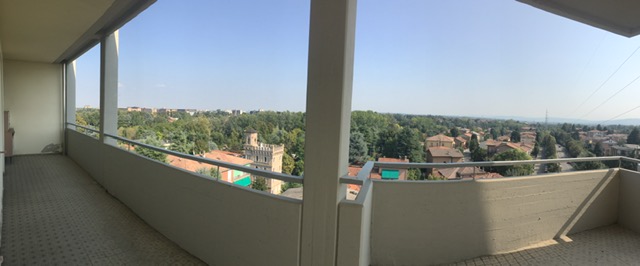 Towards its sunset, the Roman Empire became very vulnerable. At its borders new fortified houses were built, and even the Emperor Diocletian built for himself a fortified palace, a bit like a Castle. The Castles were the homes of wealthy Patricians and Nobles, who, in the Middle Ages, became the Feudal Lords with the collapse of the Empire and its subsequent shredding. Around them, the rural populations gathered, by building their villages, often included within the City Walls. The people, in case of danger, often took refuge there and the paid the Lord for shelter with free services. The peasants thus became the second family of the Feudal Lord.
Towards its sunset, the Roman Empire became very vulnerable. At its borders new fortified houses were built, and even the Emperor Diocletian built for himself a fortified palace, a bit like a Castle. The Castles were the homes of wealthy Patricians and Nobles, who, in the Middle Ages, became the Feudal Lords with the collapse of the Empire and its subsequent shredding. Around them, the rural populations gathered, by building their villages, often included within the City Walls. The people, in case of danger, often took refuge there and the paid the Lord for shelter with free services. The peasants thus became the second family of the Feudal Lord.
There are, in general, two types of Castles:
. Mountain Castles, built of stone, according to the different levels of the ground, therefore irregular and with a better defensiveness, just thanks to the bumpy terrain on which they are built.
. Plain Castles, built in brick and stone, this last one as a reinforcement in the most defenseless spots, with more regular and symmetrical schemes; technically most advanced, in comparison with the previous, to make up for the lower and limited natural defenses. With generally rectangular plants, four corners, straight walls, corner towers and a central tower ( Keep ), as the last defensive bulwark, these Castles were real masterpieces. Later, the Lords also added other “niceties” such as: perimeter moats, drawbridges, drains and access to watertight compartments.
In each Castle there are always these three elements:
1. The Palace: The residence of the Feudal Lord;
2. The Courtyard: may be small, but also huge;
3. The Gate House: the building of the army, where the soldiers gather, with the armory and horses’ stables(often this building is located in the Keep).
The functions of the Castle are:
1. Residence of the feudal lord;
2. Territorial defense.
In this new rarefied and rural society, called Middle Ages, some Vassals ruled over vast territories, by paying private militias with their belongings, and by managing their properties, where the villagers worked.
More detailed parts of the Castle are:
. Machicolations : openings between the corbels of a parapet. The Castle’s soldiers used to drop boiling oil onto attackers.
. Yett: Iron gates located at the Castle entrance.
. Oubliette: a pit closed by a trap door at the top. Prisoners were sometimes kept down there.
. Hoarding: a covered wooden gallery above a tower; which pavement had removable slats, to allow defenders to drop objects and liquids downward, on the besiegers.
. Bartizan: small turret at the corner of a tower or wall. Sometimes at the top, sometimes not.
. Arrow Loops ( with different sizes and shapes ): slots in the walls and structures that were used to shoot arrows through.
. Portcullis : a both metal and wood gate that was brought down inside the main entrance to the Castle.
. Bailey: small courtyard surrounded by walls. Sometimes they can be several.
. Battlements: ramparts built around the top walls, with regular gaps for firing arrows. They were composed by the Crenels ( 2-3 feet wide gaps ) and by the Merlons which were the solid part between two crenels.
. Postern: a gate at the back of a castle, for escape needs.





